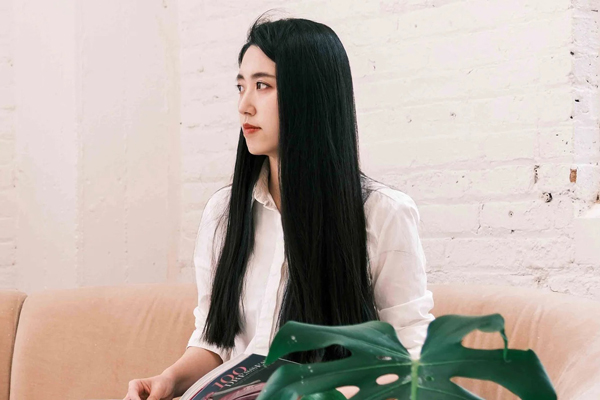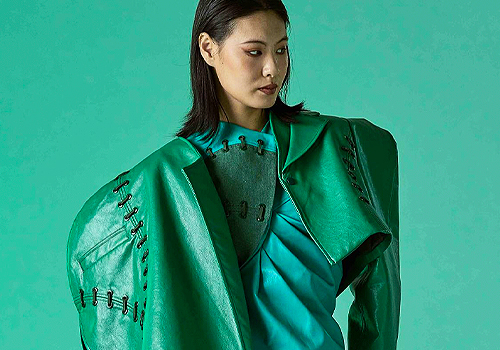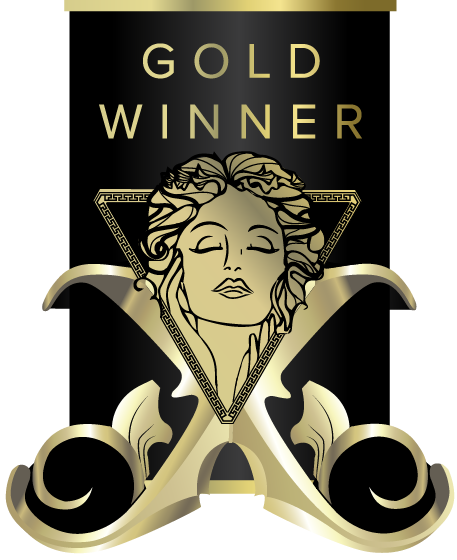
Interview
YilliaQ
1 Congratulations on winning the MUSE Design Awards! Can you introduce yourself and share about what inspired you to pursue design as a career?
I am a fashion designer who focuses on mental health issues through my designs. With a five-year background in clinical pharmacy, I understand that mental and physical health are equally important. I use a unique design approach and innovative vision to create pieces that resonate with the audience and inspire healing emotions for the wearer.
2 What does being recognized in the MUSE Design Awards mean to you?
This is the first international award I have received, and its significance is extraordinary.
3 How has this achievement impacted your career, team, or agency, and what opportunities has it brought so far?
This serves as proof of my design skills and I believe it will greatly benefit my future career development.
4 What role does experimentation play in your creative process? Can you share an example?
Experimentation always plays a critical role in my design process. For example, I create small scoliosis body sculptures and different orthopedic braces using varied materials such as clay, thermoplastic, silicone, and wires. This process has given me a more intuitive understanding of the shape of the body with scoliosis. Using different materials has also deepened my understanding of the characteristics of physical therapy for scoliosis. Through these experiments, I was able to extract various elements and details related to the theme and apply them to my designs.
5 What's the most unusual source of inspiration you've ever drawn from for a project?
Professional medical books are my unique source of inspiration. Inspired from “Gonstead Chiropractic Science & Art”, I collected a lot of ideas for mood board, and determined the silhouette in the project based on the correction methods introduced in the book. Through the professional suturing method of surgery of the treatment for scoliosis, it inspires me to make the details of the clothing, so there are a lot of leather strip threading techniques in the collection.
6 What’s one thing you wish more people understood about the design process?
On the back of the white leather coat, I applied metal steel nails of various sizes as decoration, symbolizing how metal nails integrate with bone—representing an indestructible soul.
7 How do you navigate the balance between meeting client expectations and staying true to your ideas?
It depends on whether the original intention of the project is commercial or artistic. If it is a commercial work, I will accept more advice from client. If it is an artistic, I will stick to my idea and try to persuade the client. In the process of communication, there is always a relative compromise between both sides.
8 What were the challenges you faced while working on your award-winning design, and how did you overcome them?
I want the collection to raise awareness and promote positive mental health. Therefore, the designs do not magnify the pain caused by scoliosis but instead express a strong and powerful mental state. Elements related to the theme—such as skin, bone, and braces—are all in neutral colors. The challenge I faced was choosing bright colors to highlight the collection. After trying different color options, I settled on red, blue, green, and white as the main colors. Red represents strength and courage, blue symbolizes health, green stands for vitality, and white signifies harmony. Finding fabrics in the same colors but with different shades and textures also took considerable time.
9 How do you recharge your creativity when you hit a creative block?
There will always be bottlenecks in the creative process. But persistently trying and experimentation will bring new inspiration.
10 What personal values or experiences do you infuse into your designs?
“The Treatment of Soul” comes from my personal experience. As someone with scoliosis, I have worn hard braces since childhood and undergone four orthopedic surgeries. This condition, which makes a person’s body different from typical shapes, brings not only physical pain but also emotional trauma. Feelings of inferiority and anxiety can make people afraid to wear the clothes they love and impose limitations on daily activities. Through the design process of this collection, it becomes more than just fashion; it serves as a pathway to heal my own soul. I also hope to empower others who suffer from scoliosis to step out of the shadows of negativity. We are all imperfect but unique.
11 What is an advice that you would you give to aspiring designers aiming for success?
Sometimes external opinions can interfere with people. As designers, we must stay confident. Take me as an example: just before I entered the National Graduate Examination in China, my parents said it was impossible to pass and discouraged me from switching from clinical pharmacy to fashion design. But in the end, I was admitted to the best fashion institute in China, ranking sixth in the country. Even before that, I had never studied art, and my drawing skills were poor. I believe in my design work and vision.
12 If you could collaborate with any designer, past or present, who would it be and why?
I would like to collaborate with Jeremy Scott if possible. His design work is bold and avant-garde, breaking the bonds of tradition. The unique elements he uses on garments are striking, often with a humorous and ironic tone. I want to learn from him and create a wildly imaginative, diverse project.
13 What's one question you wish people would ask you about your work, and what's your answer?
I wish more people asked how to buy my work. The answer is simple — you can find it here: https://www.yilliaq.info/

